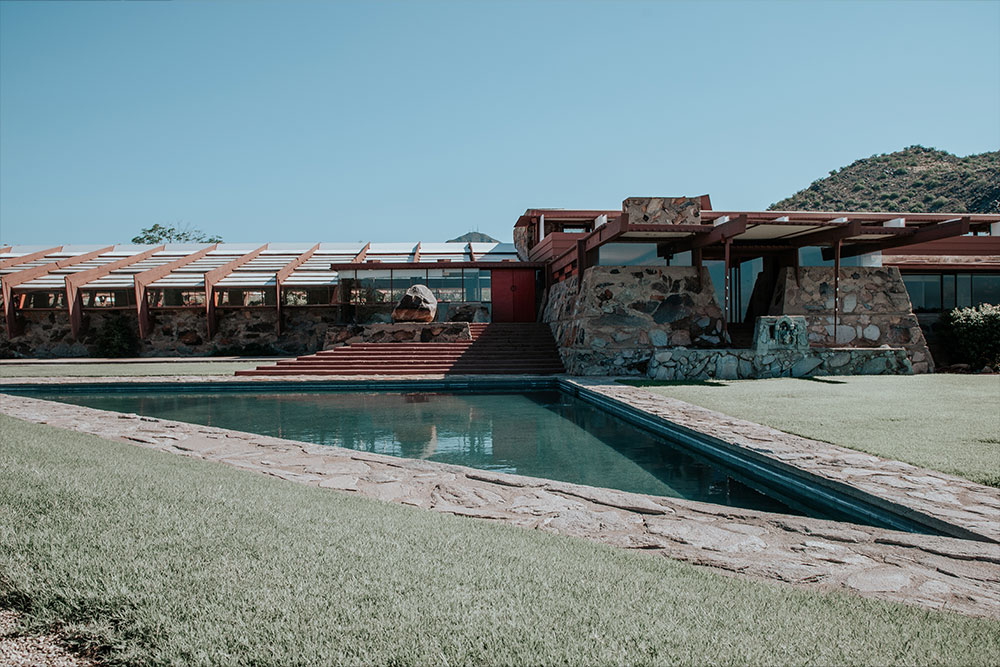


Go back in time and walk through the halls of Frank Lloyd Wright’s 1937 desert laboratory. Not only was it built in a way to mirror the desert’s vast landscape, but its foundation consists largely of “desert masonry.” This material is a mixture of local rock, wooden forms, cement, and desert sand.
Home to the headquarters of the Frank Lloyd Wright Foundation, it’s also a UNESCO World Heritage Site and National Historic Landmark.
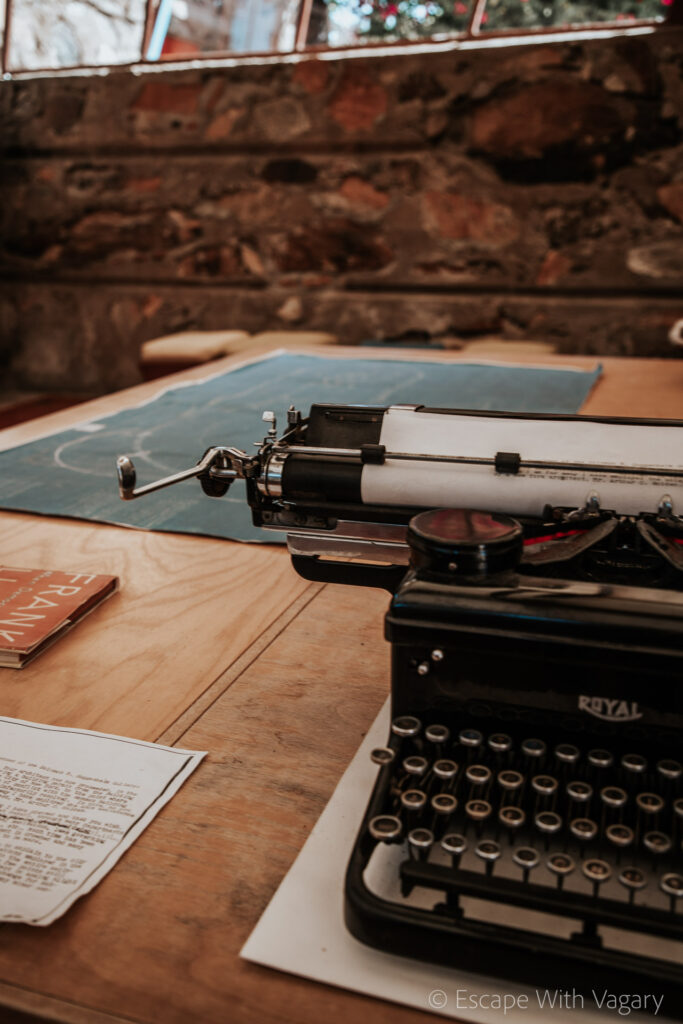
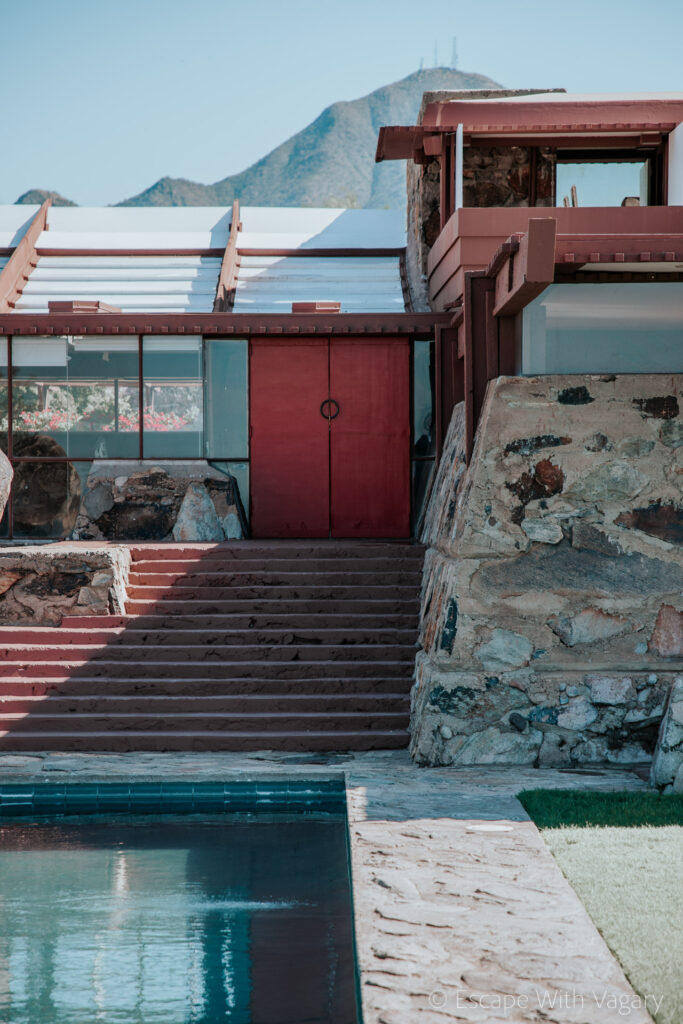
The name Taliesin comes from his home in Spring Green, Wisconsin. In 1935, he started traveling to Arizona during the winter to escape the cold in Wisconsin, so, after a couple years, he decided to purchase land.
Everything he did, he did with the natural Sonoran Desert in mind. His goal was to embed his house within the landscape, which you can see not only in the building materials, but also all the natural light and sweeping, low ceilings, that, in my opinion, look as though they mimic the layers of a mountain.
Throughout his life, Wright designed over 1,000 buildings. He was different in that instead of following the sought out European-style building, he took his passion a different route. He wanted to showcase and celebrate American culture, so that’s exactly what he did.
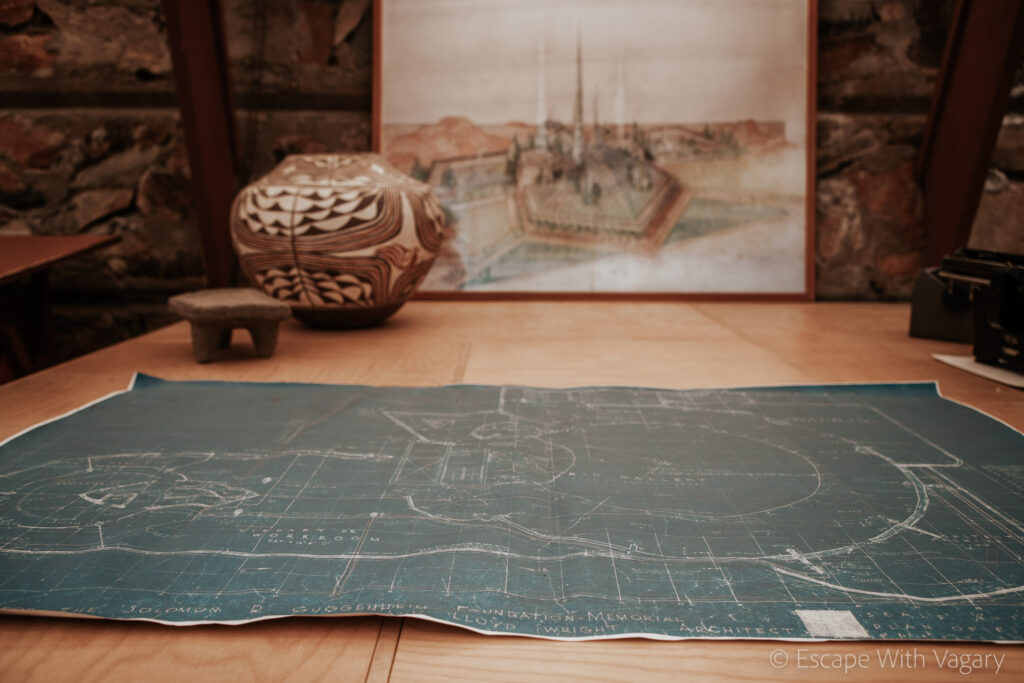
His Taliesin West home has a beautiful, bright dining room, a cabaret theater, music pavilion, drafting studio, workshop, office, private living quarters, etc. Canvas rooms let in the natural sunlight, and the interior and exterior pop with different shades of reds.
My personal favorite was the striking, bright blue, triangular pool overlooking the desert views. There’s another pool/fountain located within an outdoor walkway.
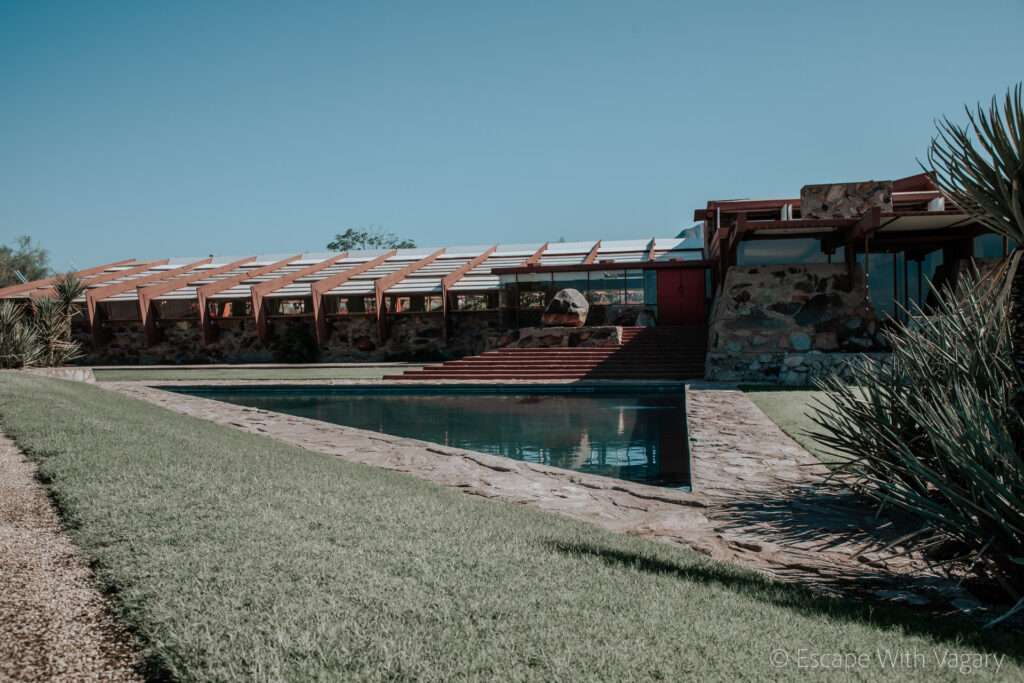
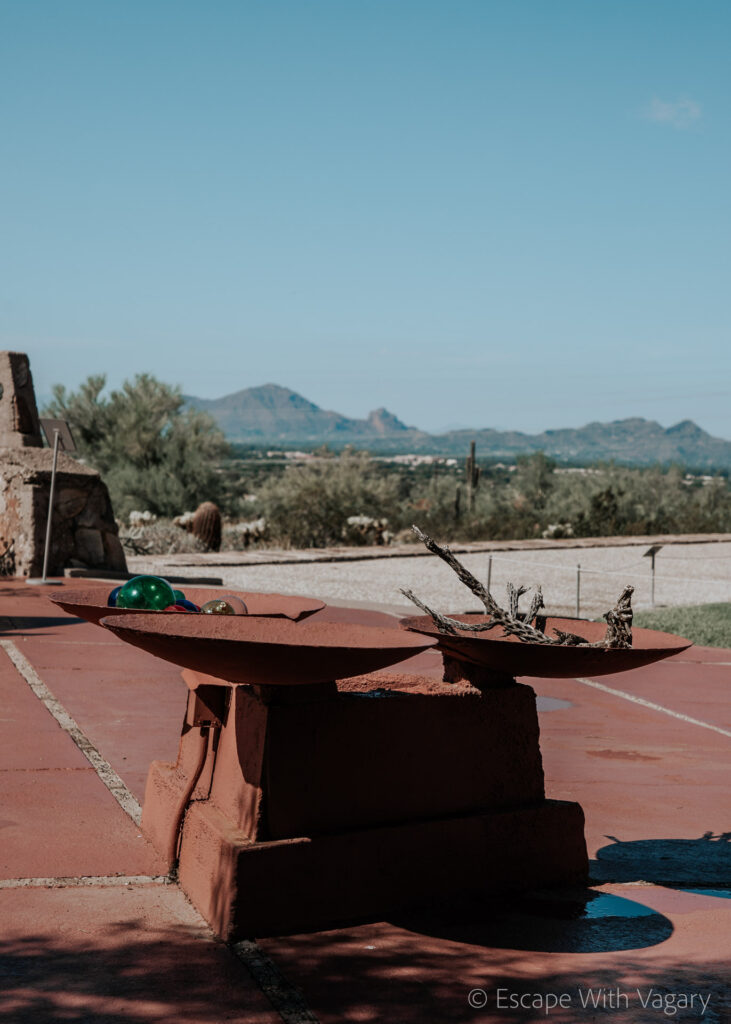
“Arizona needs its own architecture,” Wright had said. “Arizona’s long, low, sweeping lines, uptilting planes. Surface patterned after such abstraction in line and color as find ‘realism’ in the patterns of the rattlesnake, the Gila monster, and the saguaro, cholla or staghorn – or is it the other way around – are inspiration enough.”
The Frank Lloyd Wright Foundation has worked to preserve this piece of art Wright left us with. They work to honor his legacy by staying true to his vision and design, using values-based strategies in restoration and conservation.
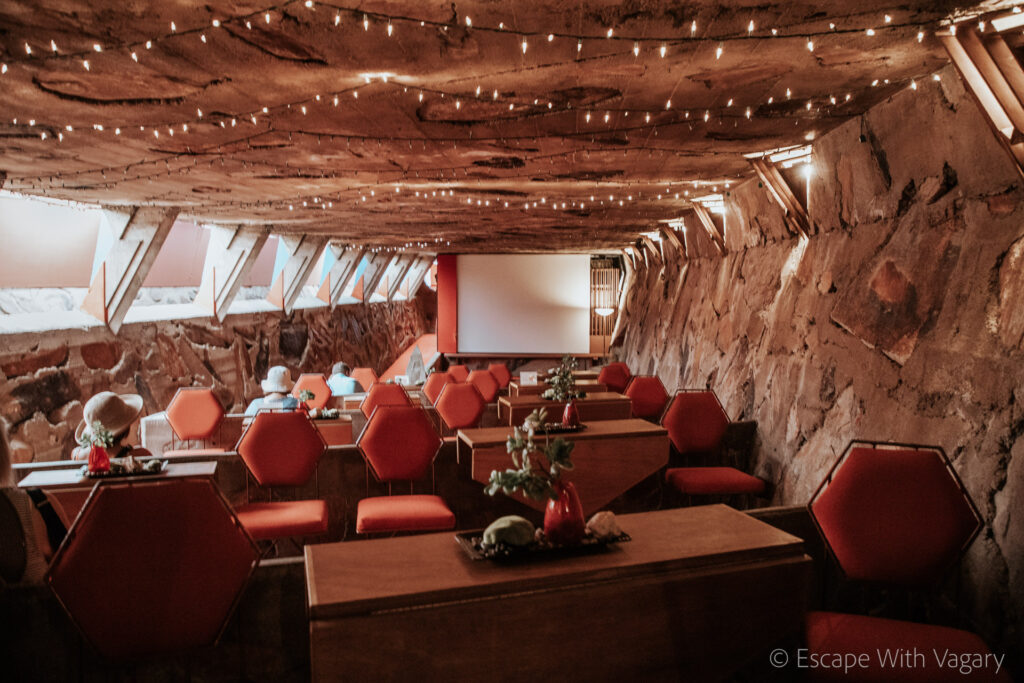
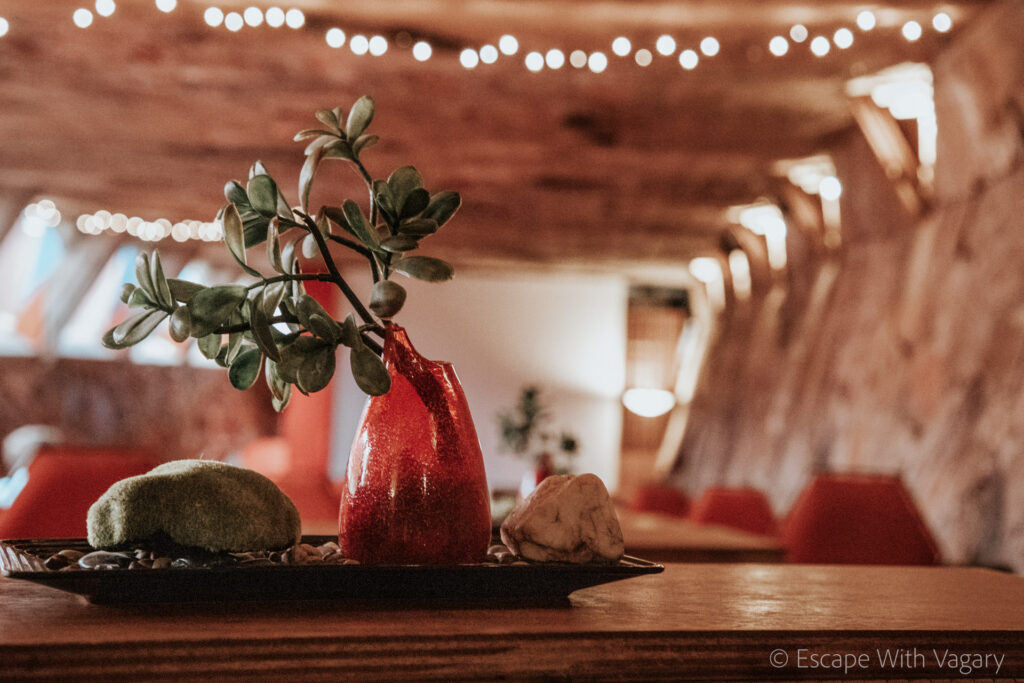
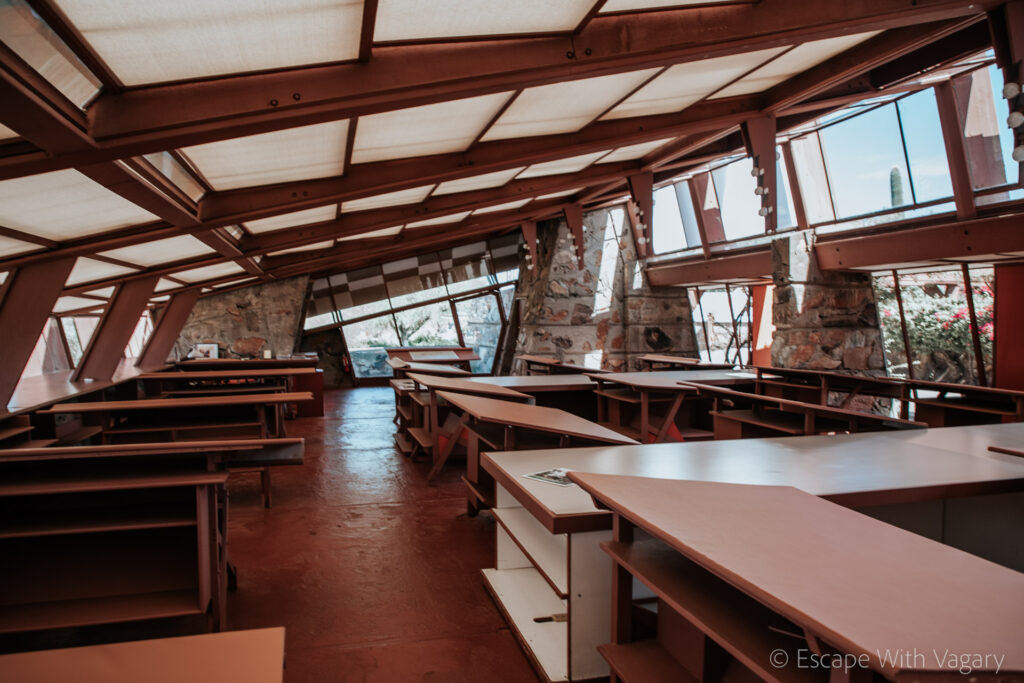
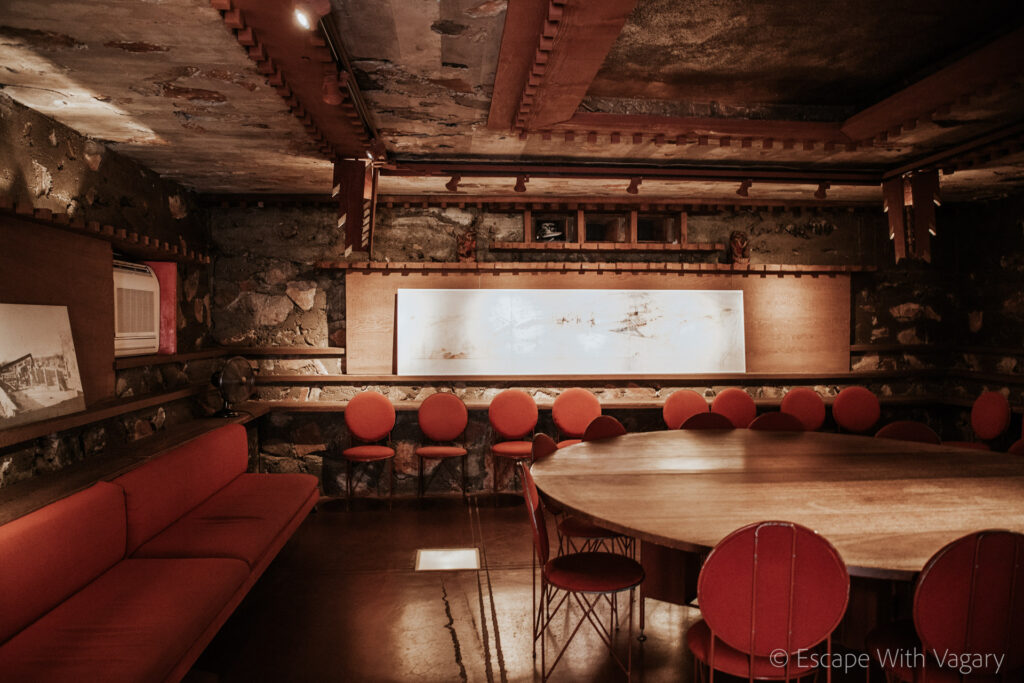
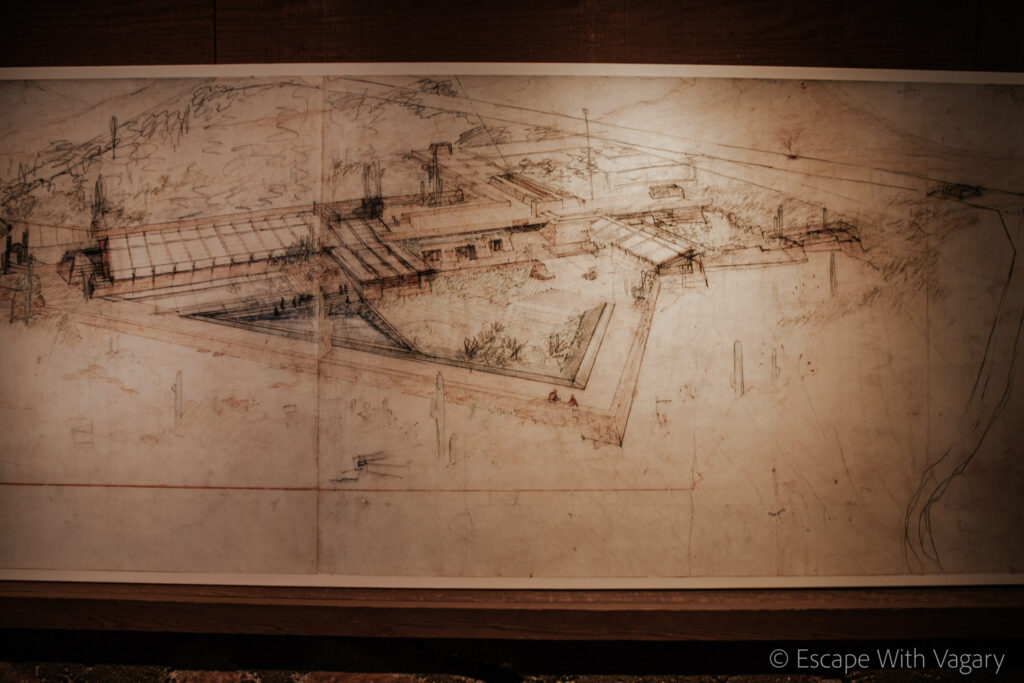
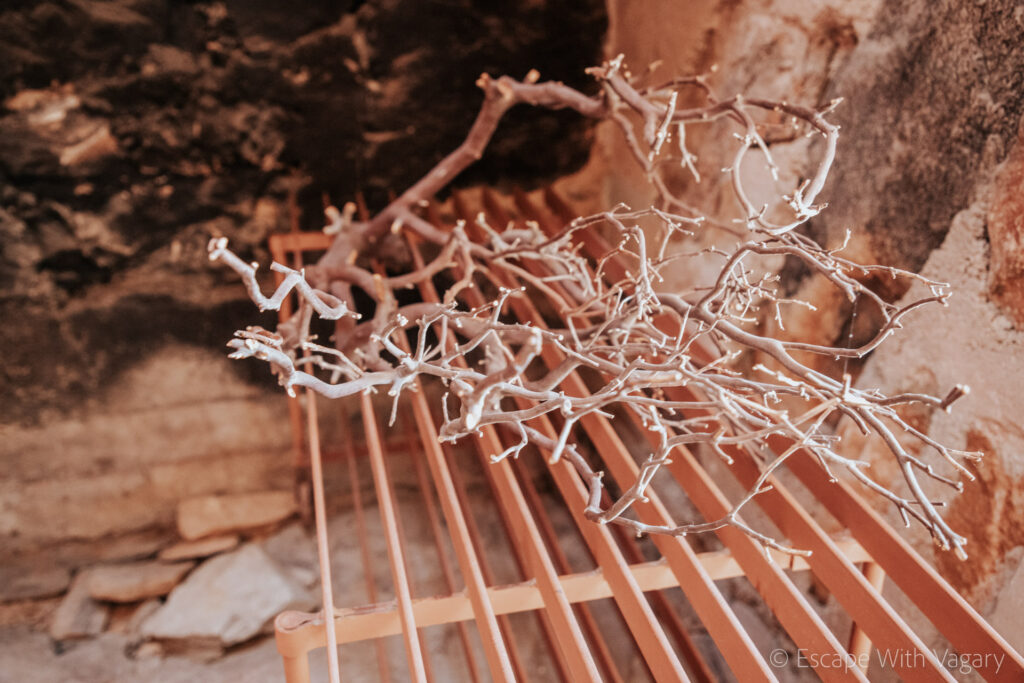
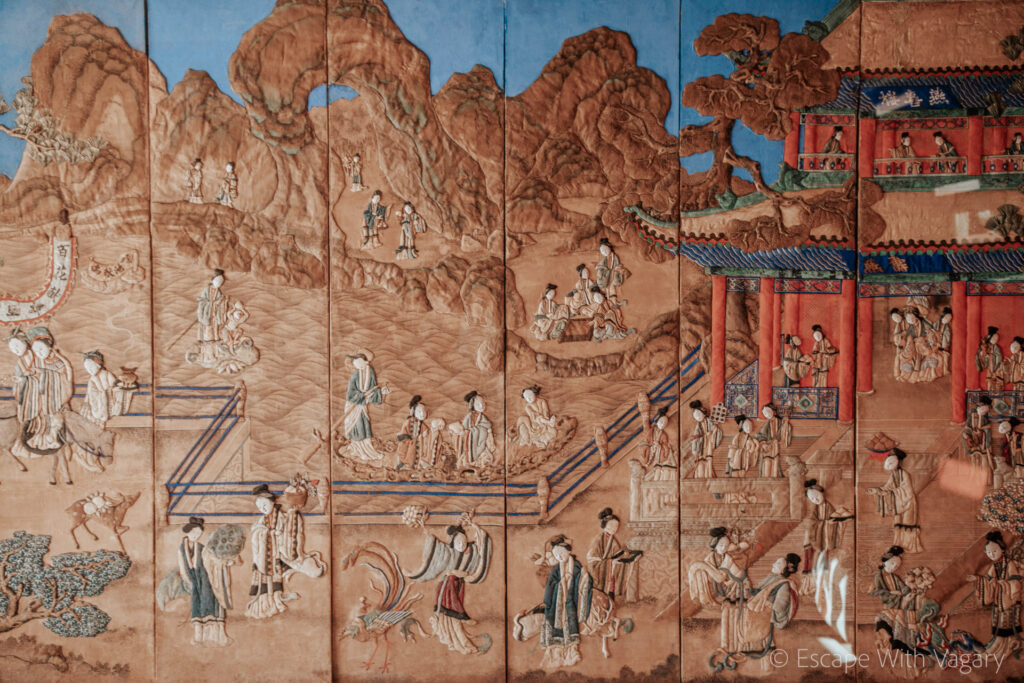
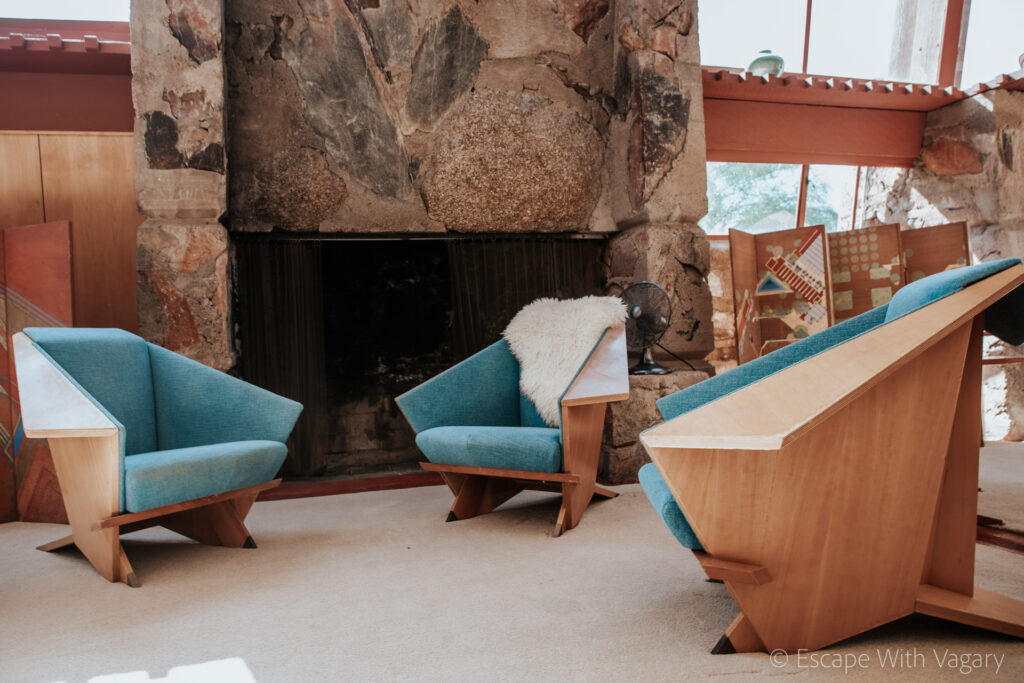
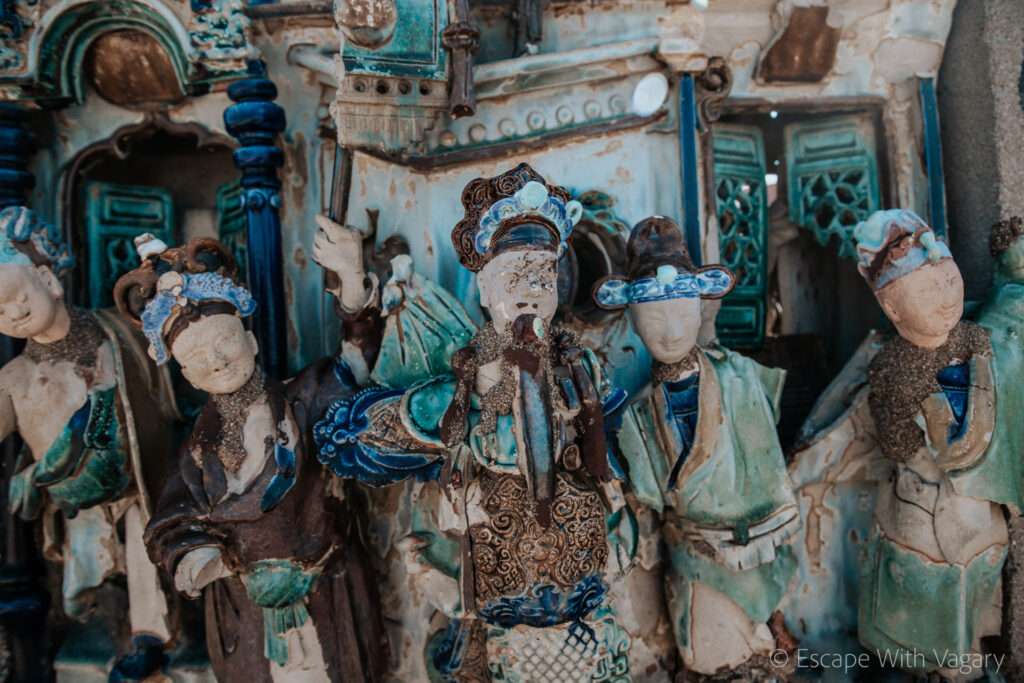
As their website states, their vision, “in the words of Frank Lloyd Wright, [is] ‘to make life more beautiful, the world a better one for living in, and to give reason, rhyme, and meaning to life.’” Their mission is to “inspire people to discover and embrace an architecture for better living through meaningful connections to nature, the arts, and each other.”
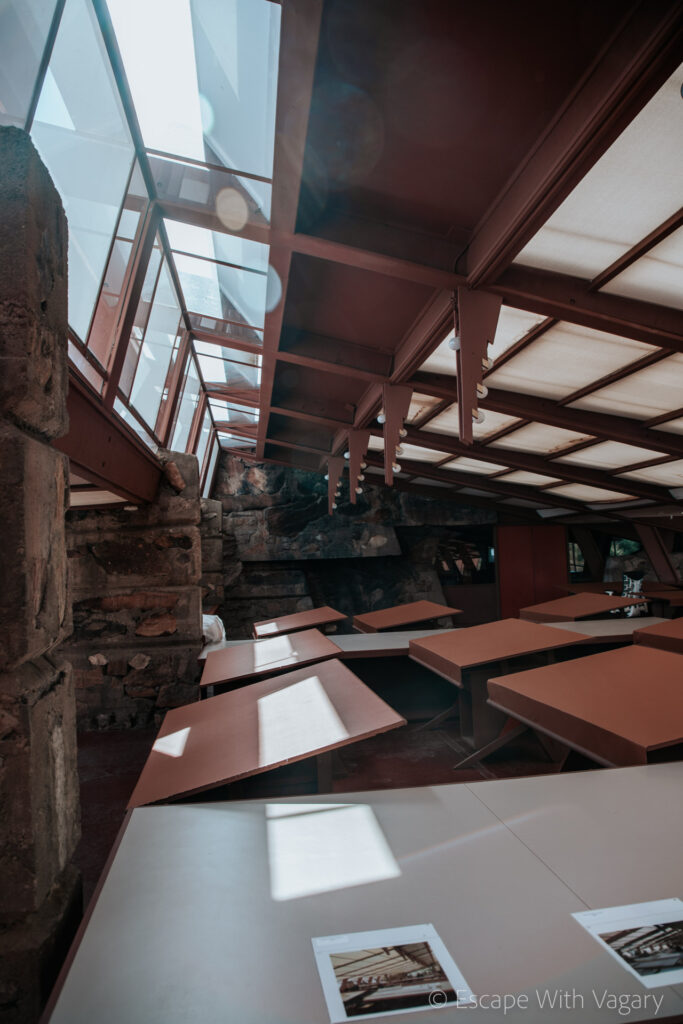
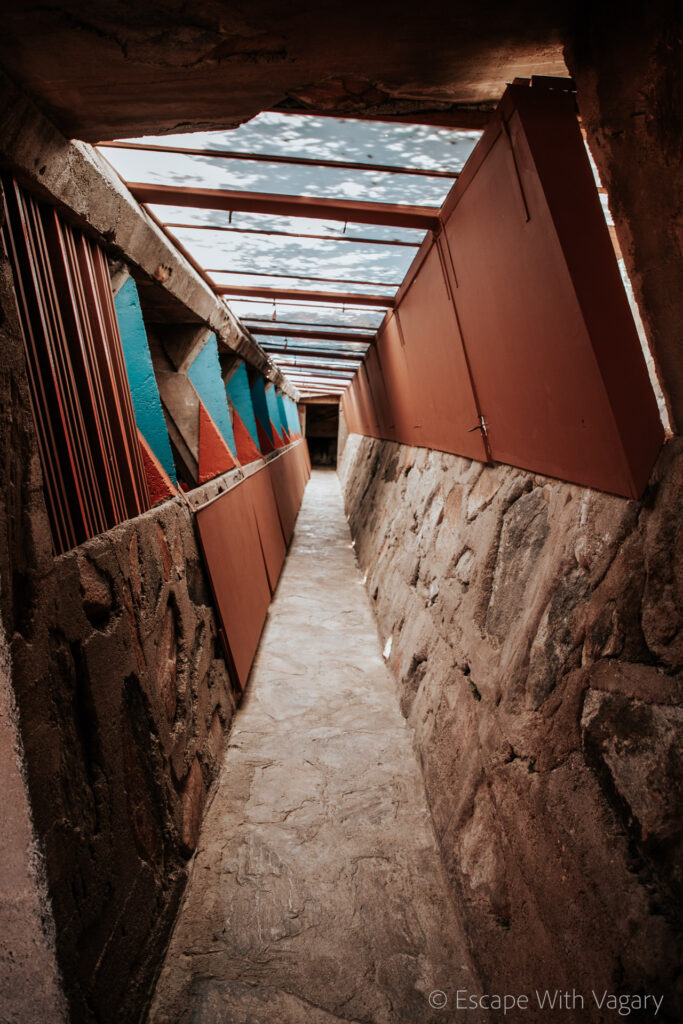
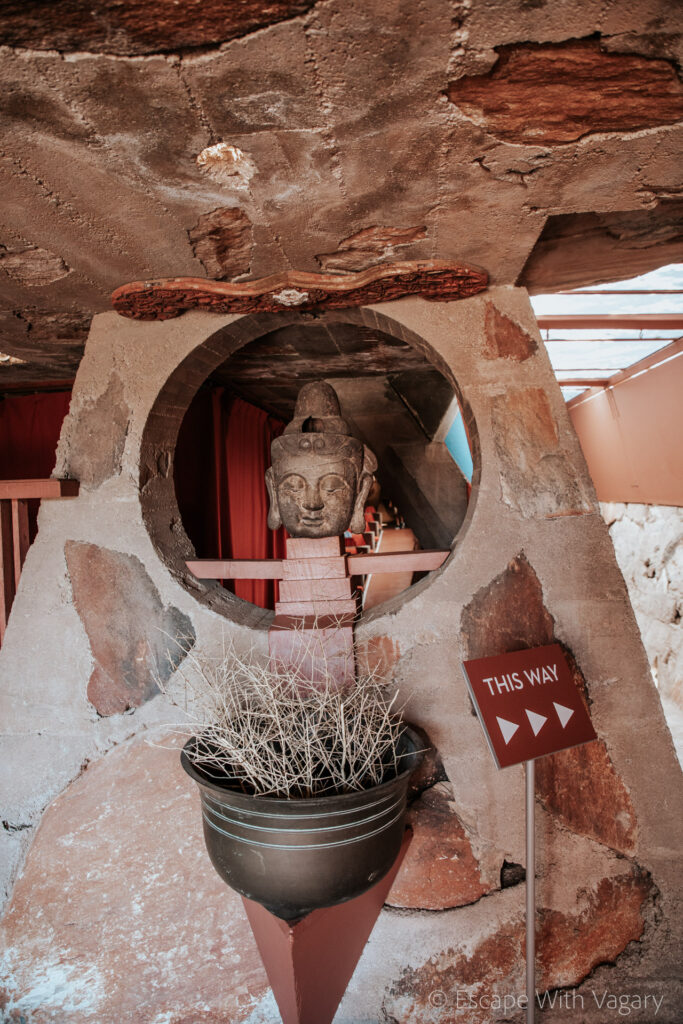
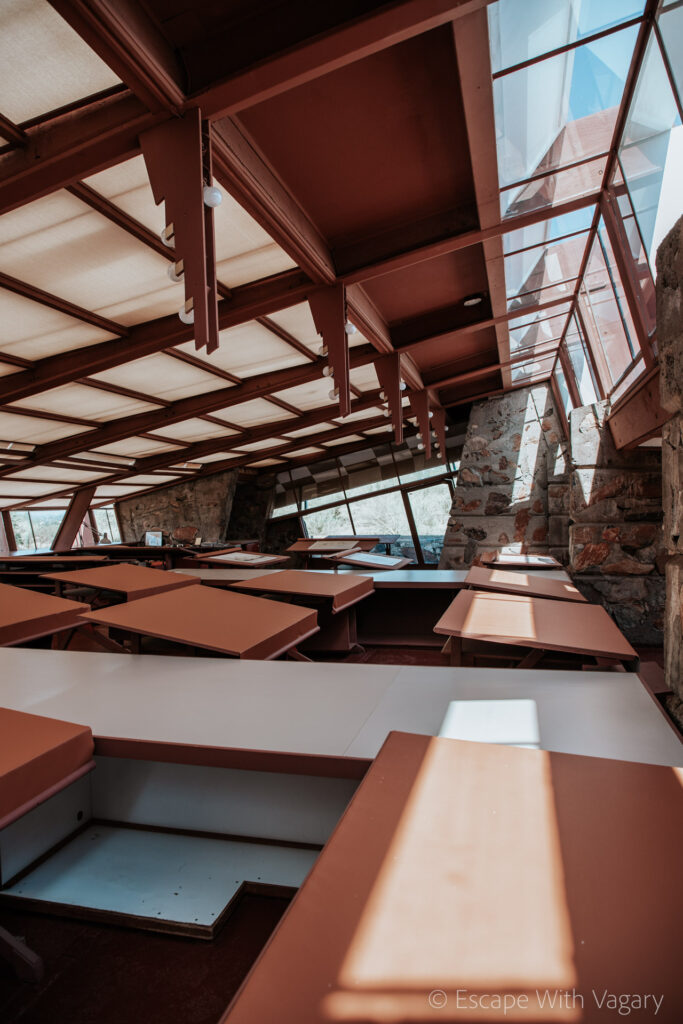
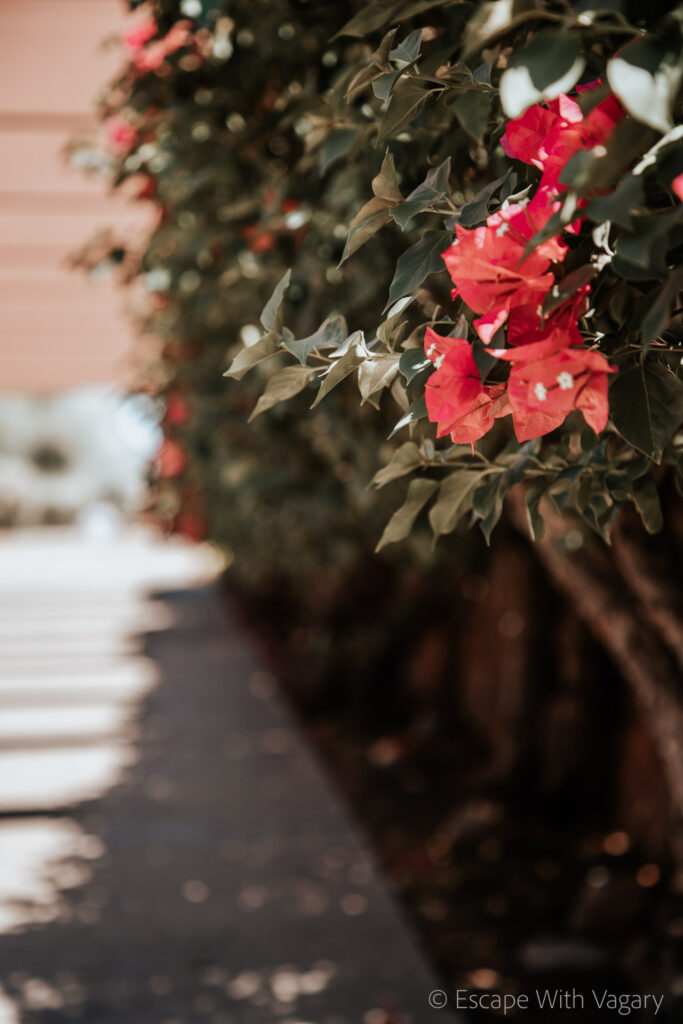
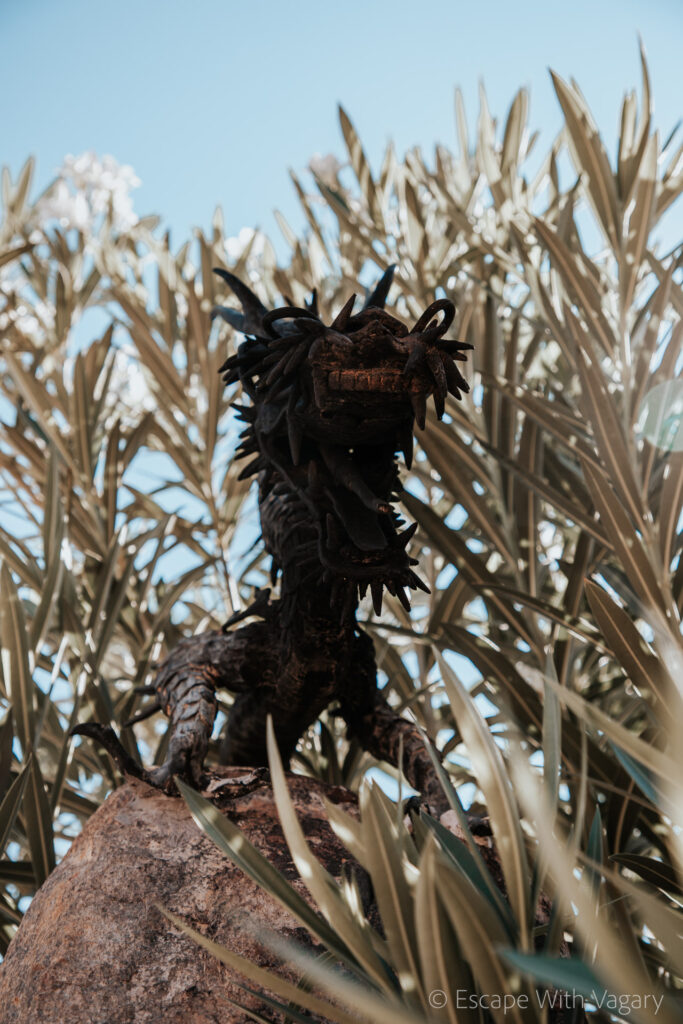
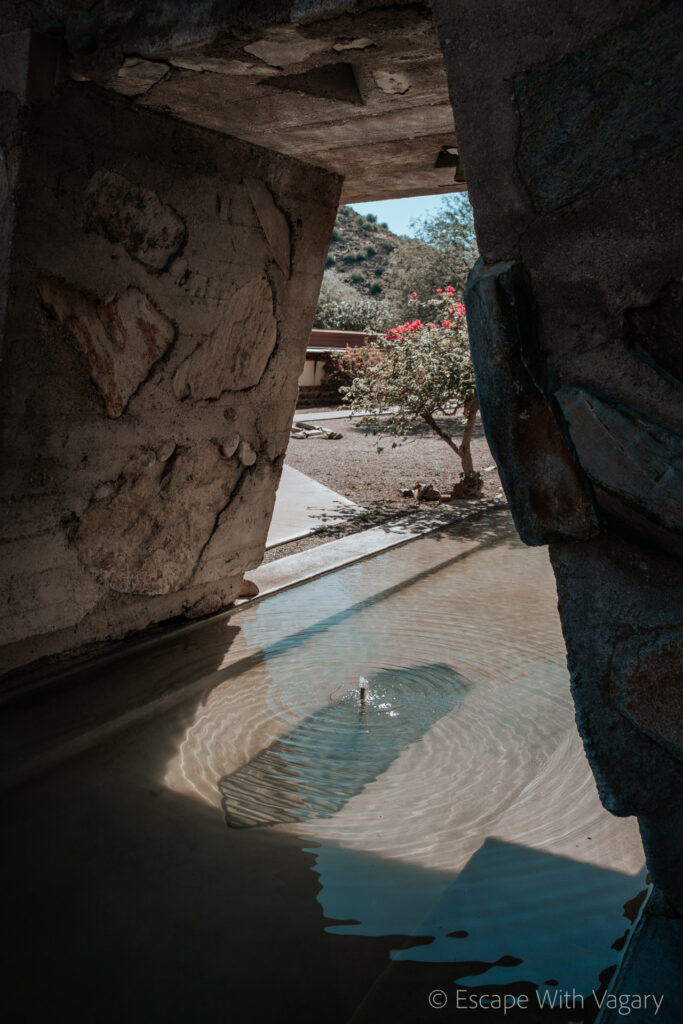

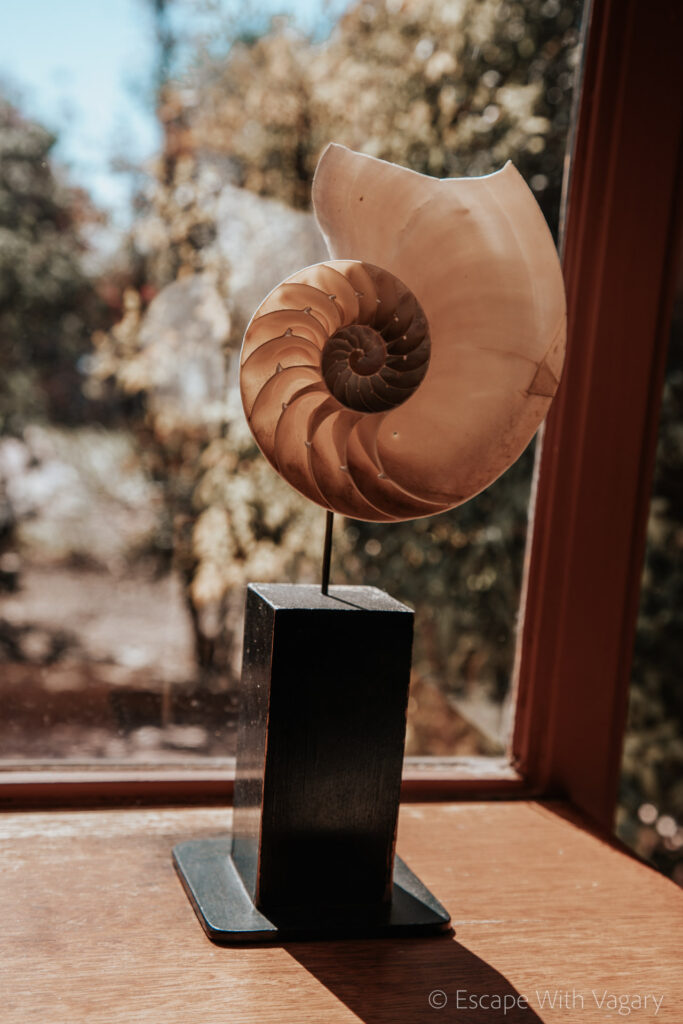
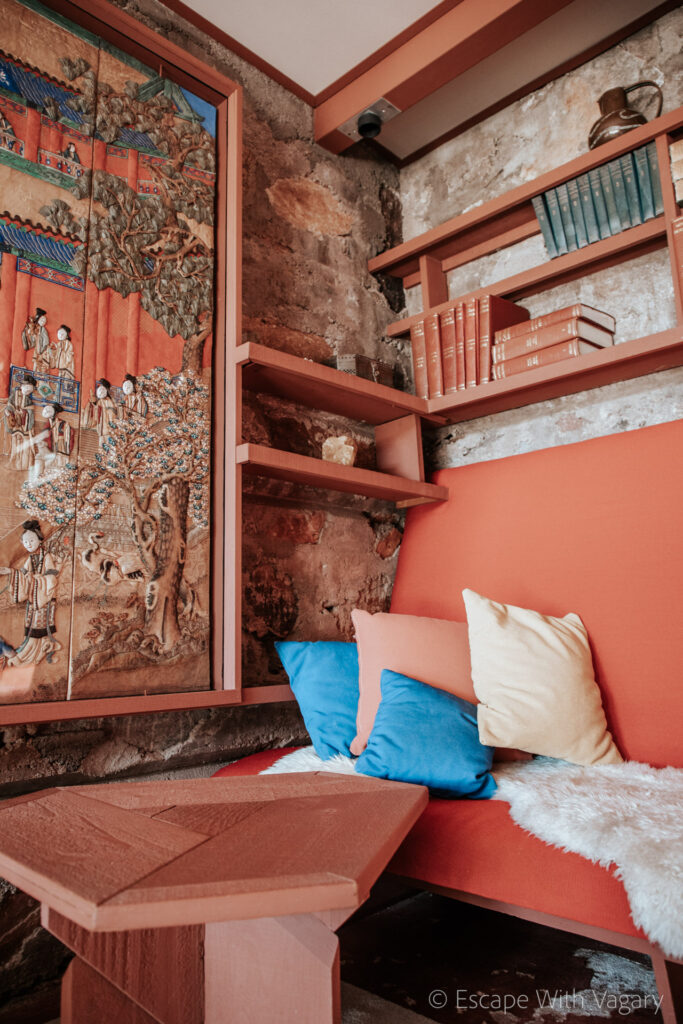
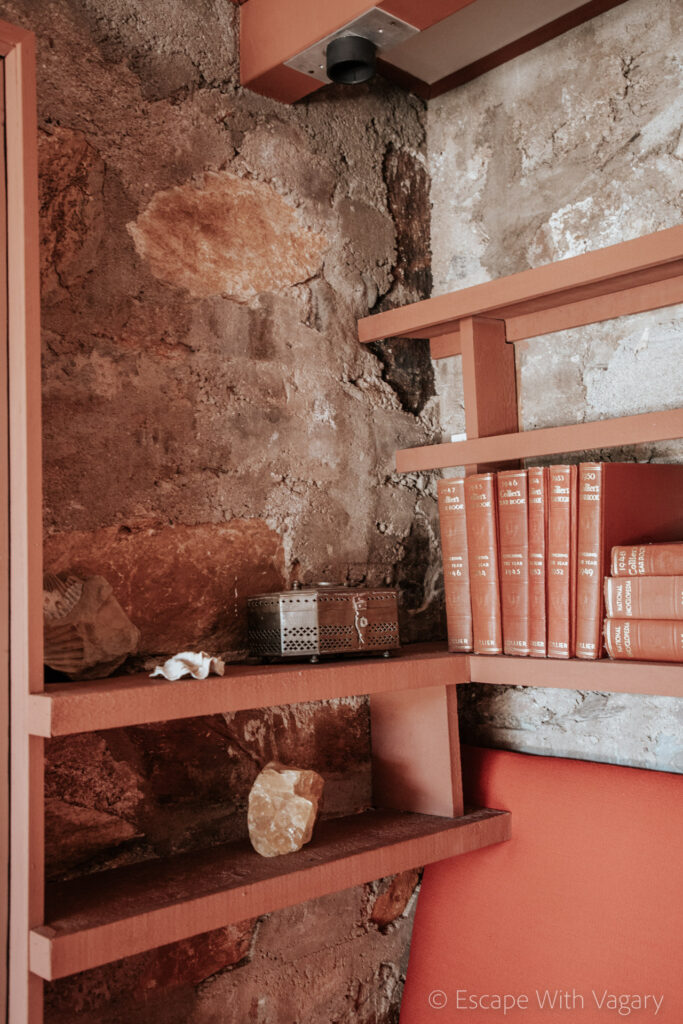
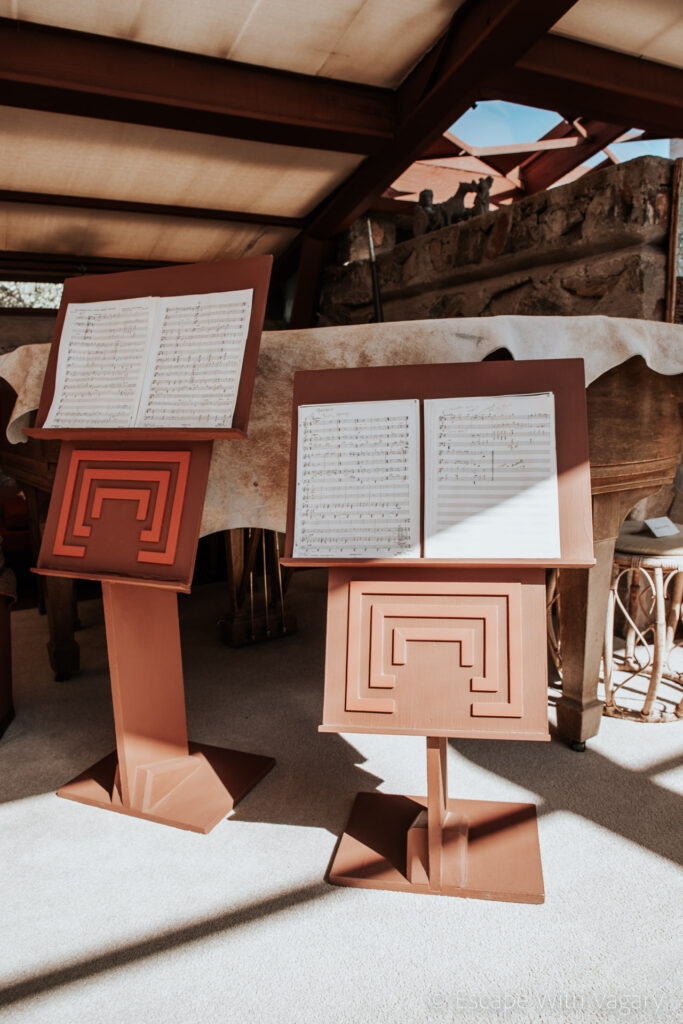
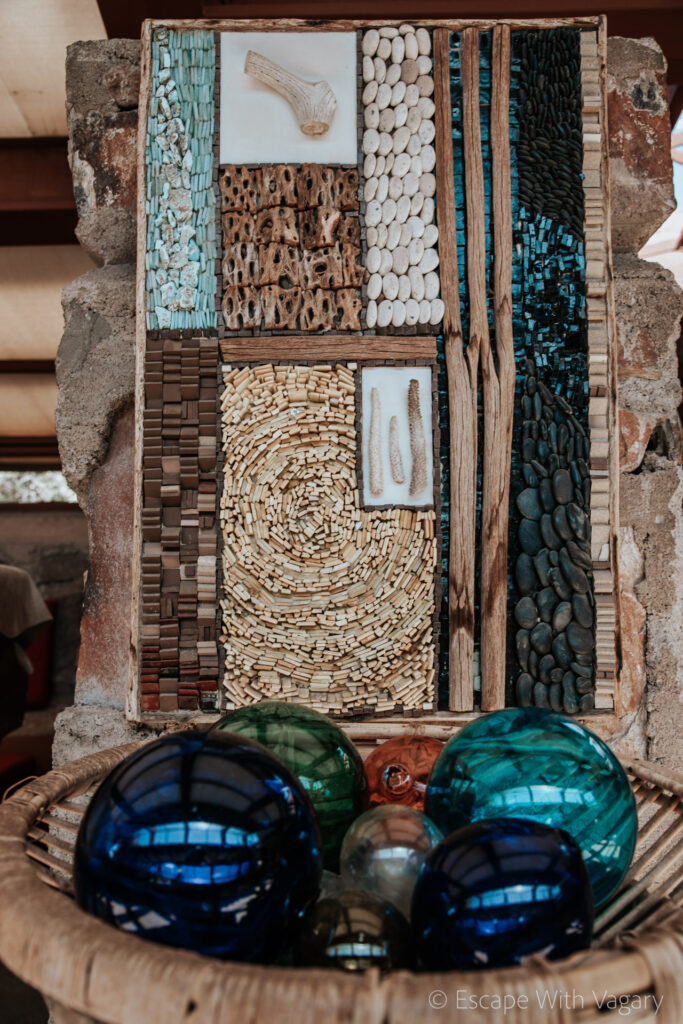
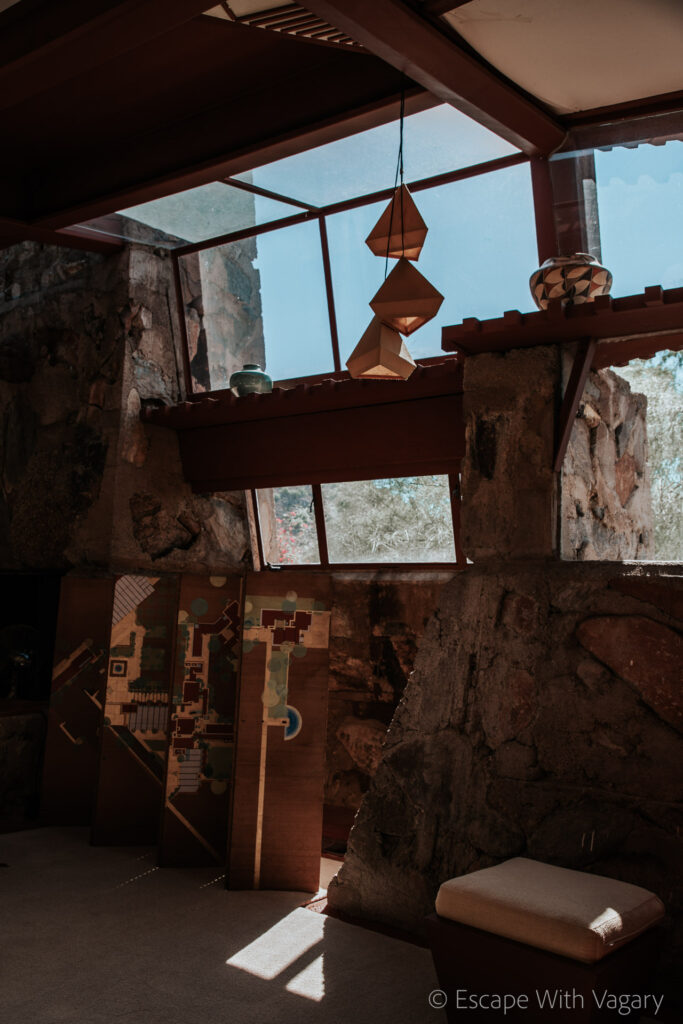
Because of all the work they’ve done, you can visit the site today, over 60 years after he passed away. Offering both audio tours and guided tours, they’re open 7-days a week!
For more information and to purchase tickets, visit their website.
